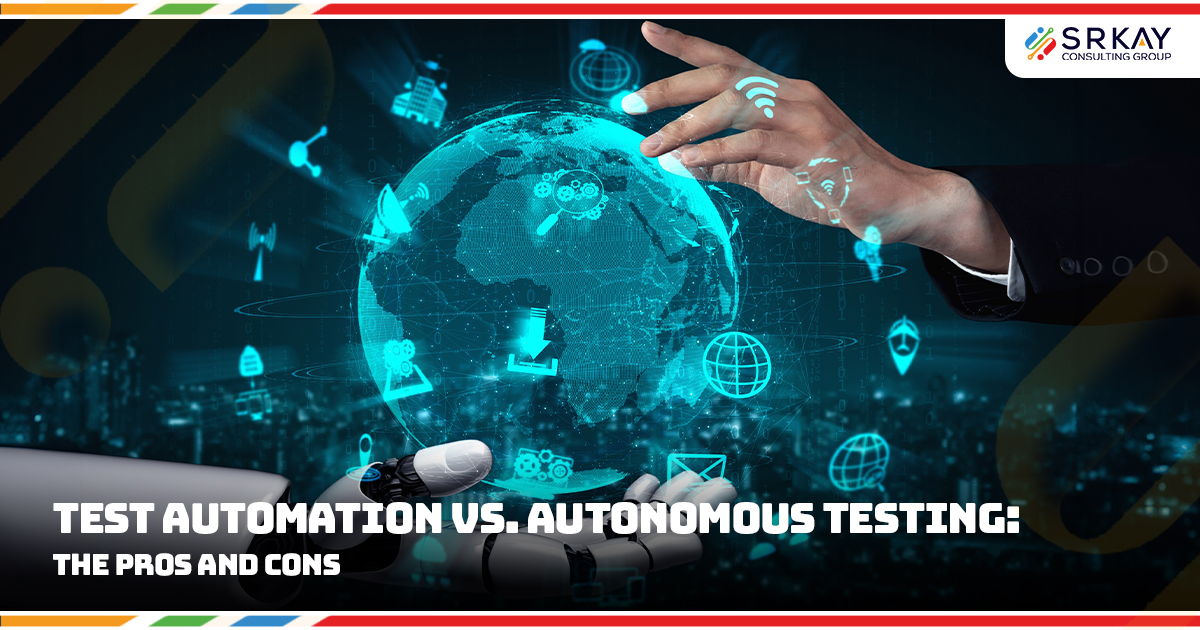Test Automation vs. Autonomous Testing: The Pros and Cons

In the fast-paced world of software development, the quest for efficiency and accuracy in testing has led to the adoption of two distinct methodologies: Test Automation and Autonomous Testing. Each approach offers unique advantages and comes with its own set of challenges, making the choice between them critical for project success. This comprehensive blog explores the nuances of both methodologies, delving into their pros and cons to provide a detailed understanding for software professionals.
Test Automation: Efficiency in Repetition
Test Automation, a familiar concept in software testing, revolves around using tools to execute predefined test scripts. This approach is designed to minimize manual effort and ensure consistent test execution.
Pros:
- Efficiency in Repetitive Tasks: Test Automation is highly effective for repetitive testing scenarios, saving time and reducing human error.
- Consistency and Reliability: It offers consistent outcomes, crucial for regression testing and routine checks.
- Cost-Effective in the Long Run: Despite initial setup costs, Test Automation can be cost-effective over time, especially for large projects with frequent testing needs.
Cons:
- Initial Setup and Maintenance: Setting up Test Automation requires significant effort and expertise, and maintaining test scripts can be challenging.
- Limited Flexibility: Test Automation may struggle with complex, dynamic testing scenarios or when application changes frequently.
Autonomous Testing: The Next Leap Forward
Autonomous Testing represents an advanced evolution in testing, harnessing AI and ML to not just run tests, but also to generate and adapt them autonomously.
Pros:
- Adaptive and Intelligent: Autonomous Testing can adapt to changes in the software, learning from previous runs and evolving its testing strategies.
- Minimal Human Intervention: This methodology significantly reduces the need for manual oversight, making it ideal for complex and large-scale projects.
- Enhanced Coverage and Speed: Autonomous Testing can handle a variety of test scenarios, including complex edge cases, faster and more efficiently than manual methods.
Cons:
- Higher Initial Cost and Complexity: The sophistication of Autonomous Testing often means higher initial costs and a more complex setup.
- Integration Challenges: Incorporating Autonomous Testing into existing frameworks and workflows can be challenging.
- Learning Curve: There’s a steeper learning curve, given the advanced nature of the technology.
A Comparative Overview
When comparing Test Automation with Autonomous Testing, the key differences lie in their scope, intelligence, and dependency on human intervention. Test Automation focuses on executing pre-defined test scripts, while Autonomous Testing takes a more dynamic approach, capable of generating and adapting its testing strategies based on real-time data and learning.
Test Automation is often preferred for projects with well-defined, repetitive testing requirements. In contrast, Autonomous Testing is suited for complex projects where test scenarios are continually evolving, and there is a need for higher test coverage and adaptability.
Choosing the Right Approach
The decision to opt for Test Automation or Autonomous Testing should be based on specific project needs, available resources, and the desired level of test coverage and adaptability. It’s also important to consider the skill set of the testing team and the nature of the software being developed.
Looking Ahead
As software development continues to evolve, the lines between Test Automation and Autonomous Testing may blur, with more tools offering a blend of both methodologies. The future of software testing lies in leveraging the best of both worlds – the efficiency and reliability of Test Automation, combined with the intelligence and adaptability of Autonomous Testing.
In conclusion, both Test Automation and Autonomous Testing have significant roles to play in the software development lifecycle. Understanding their strengths and weaknesses is key to implementing the most effective testing strategy that aligns with your project goals and ensures the delivery of high-quality software.




